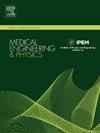A patient-matched prosthesis for thumb amputations: Design, mechanical and functional evaluation
IF 2.3
4区 医学
Q3 ENGINEERING, BIOMEDICAL
引用次数: 0
Abstract
Thumb amputations strongly affect hand functionality in daily activities. The currently available solutions, such as microsurgical treatments and external vacuum prostheses present disadvantages, which can be successfully addressed through the osseointegration technique. However, despite its widespread use in oral applications, only a few osseointegrated solutions for the treatment of hand-finger amputations are available. Bone remaining limbs may have different lengths, diameters, and conditions and no patient-matched osseointegrated medical devices are available on the market. The manuscript presents the first patient-matched medical device for the treatment of thumb amputations. The prosthesis mainly consists of three components: an osseointegrated fixture which is implanted into the medullary canal of the bone remaining limb, an abutment, and an external digital prosthesis. The design phase is followed by computational and experimental analysis to optimize the design of each component attached to the osseointegrated fixture in order to preserve the implant fixture and bone. The maximum force generated during the pinch test in a healthy subject is approximately 80 N. The mechanical performance required during daily activities is achieved by the novel proposed device and the obtained results confirm that, in case of loads greater than daily ones, the failure may occur in the abutment component which is external to the body. A limitation of the current study consists in the lack of analysis on the bone-implant interface for which specific investigations would be required: currently, the contact between bone and fixture is assumed to be fixed, i.e. no micro motions are considered. Research is ongoing to test the entire device in a clinical study to collect quantitative and qualitative information from patients and surgeons.

拇指截肢患者匹配假体:设计、机械和功能评估
拇指截肢严重影响日常活动的手部功能。目前的解决方案,如显微外科治疗和外部真空假体存在缺点,可以通过骨整合技术成功解决。然而,尽管其在口腔应用中广泛使用,但只有少数骨整合解决方案可用于治疗手手指截肢。骨残肢可能有不同的长度、直径和情况,市场上没有与患者匹配的骨集成医疗设备。该手稿提出了第一个病人匹配的医疗设备,用于治疗拇指截肢。该假体主要由三部分组成:植入骨残肢髓管内的骨整合固定装置、基台和外指假体。设计阶段随后进行计算和实验分析,以优化连接到骨整合固定装置的每个组件的设计,以保护种植体固定装置和骨。在健康受试者的捏压试验中产生的最大力约为80 n。日常活动所需的机械性能由新提出的装置实现,所获得的结果证实,在大于日常负荷的情况下,可能发生在身体外部的基台部件上。目前研究的一个局限性在于缺乏对骨-种植体界面的分析,这需要进行具体的调查:目前,假设骨与固定装置之间的接触是固定的,即不考虑微运动。在临床研究中测试整个设备的研究正在进行中,以从患者和外科医生那里收集定量和定性信息。
本文章由计算机程序翻译,如有差异,请以英文原文为准。
求助全文
约1分钟内获得全文
求助全文
来源期刊

Medical Engineering & Physics
工程技术-工程:生物医学
CiteScore
4.30
自引率
4.50%
发文量
172
审稿时长
3.0 months
期刊介绍:
Medical Engineering & Physics provides a forum for the publication of the latest developments in biomedical engineering, and reflects the essential multidisciplinary nature of the subject. The journal publishes in-depth critical reviews, scientific papers and technical notes. Our focus encompasses the application of the basic principles of physics and engineering to the development of medical devices and technology, with the ultimate aim of producing improvements in the quality of health care.Topics covered include biomechanics, biomaterials, mechanobiology, rehabilitation engineering, biomedical signal processing and medical device development. Medical Engineering & Physics aims to keep both engineers and clinicians abreast of the latest applications of technology to health care.
 求助内容:
求助内容: 应助结果提醒方式:
应助结果提醒方式:


